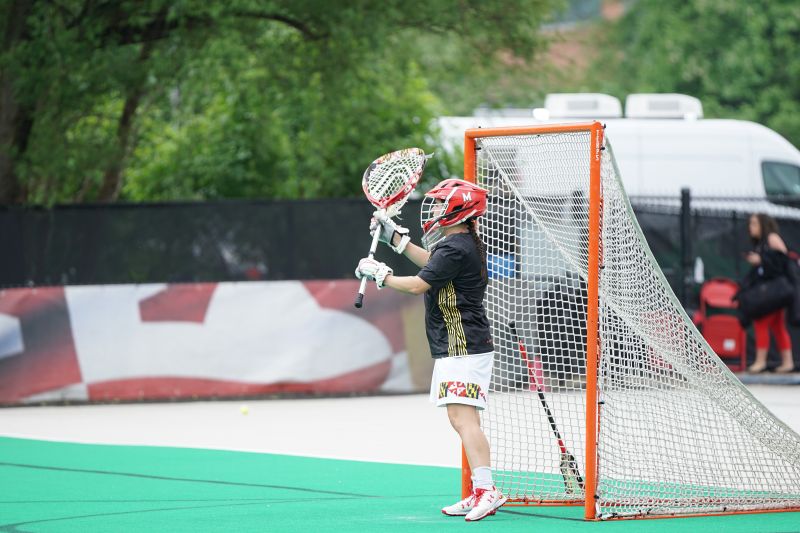How to Choose the Best Lacrosse Stick Size for Your Kids Game in 2023How to Choose the Best Lacrosse Stick Size for Your Kids Game in 2023
Measure Your Child’s Height for Proper Stick Length
Selecting the right lacrosse stick size for your young player starts with measuring their height. As a general guideline, the length of the stick should match the distance from the ground to the player’s hips or sternum when standing upright. For attackmen and middies, the head of the stick can extend a couple inches above this point, while defensemen typically opt for sticks that reach the collarbone or just below the chin.
When properly sized, your child should be able to comfortably grip the stick handle while holding it vertically next to their body. There should be no more than a few inches of extra length beyond their sternum and no need to reach uncomfortably high or low during play. Allowing a bit of room for growth is ideal, but too much extra length can hinder ball control and checking skills.
While height charts provide a baseline, it’s best to physically measure each player to dial in the optimal stick length. Start by having your kid stand straight with their shoes on and arms relaxed at their sides. Mark their height on a wall or use a tape measure to determine the distance from the floor to their sternum or collarbone. Compare this length to the manufacturer’s sizing guidelines and select a stick within an inch or two of that mark.
With the properly fitted stick in hand, observe your player cradling, scooping, passing and shooting. If they have to strain to reach the head or can’t generate sufficient power, consider sizing down. Be sure to remeasure at least twice per year as growing kids will need regular length adjustments. With the right size stick, players gain confidence handling the ball and make quicker progress mastering fundamentals.
Consider Skill Level When Selecting Stick Size
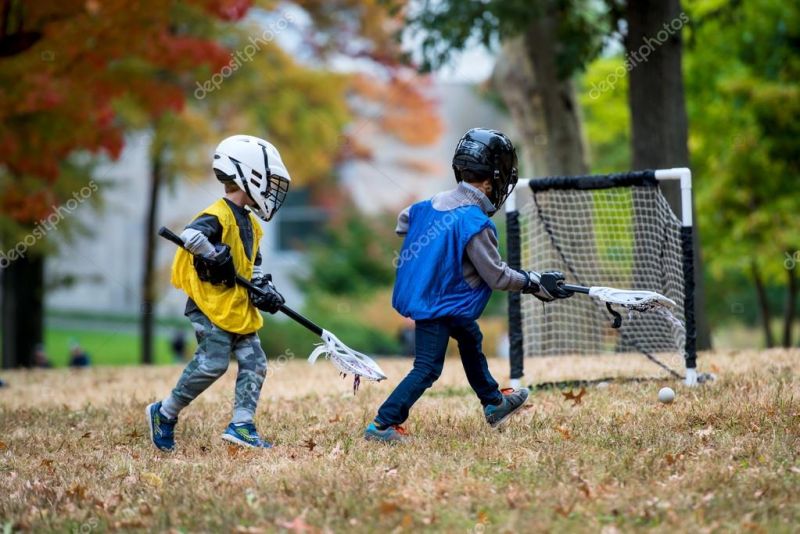
In addition to height, factoring in your child’s skill level and position is key when selecting the optimum lacrosse stick size. More advanced players typically utilize longer sticks for greater reach and ball control, while beginners find shorter sticks easier to handle as they develop technical skills.
For new players just learning the game, err on the side of shorter stick lengths even if they meet the height for a longer pole. The exception could be taller, athletic middle or high school players jumping into lacrosse for the first time. But in general, youth players new to the sport will gain confidence faster using sticks on the shorter, more manageable end of the size range for their age group.
As players improve and move up in age brackets, extending stick length helps advanced ball handling, passing, scooping and checking. Attackmen and middies may add a couple inches above their height measurement, while defensemen can go even longer for maximum reach. But be sure your player can still implement proper technique without overextending on cradling, shooting or poke checks.
Stick with the beginner size ranges of 40-60 inches for Mini Sticks, 50-60 inches for Junior sticks, and 52-72 inches for Youth through High School sticks. Intermediate players can extend toward the upper end of those spectrums, while advanced players may opt for even longer poles if NCAA rules allow it. Goalies also require longer sticks for covering more of the net.
For multi-sport athletes new to lacrosse, consider starting on the shorter end of the size range during their first season before extending length. This allows them to focus on developing skills with a more controlled stick before adding reach. No matter the skill level, proper technique trumps maximizing stick length in the early stages of the sport.
Consulting with coaches helps dial in the ideal stick size based on your child’s experience level, positioning and skills. While height provides a starting point, factoring in ability allows players to perform at their peak with a properly sized stick as they progress in the sport.
Attackmen Typically Use Shorter Sticks
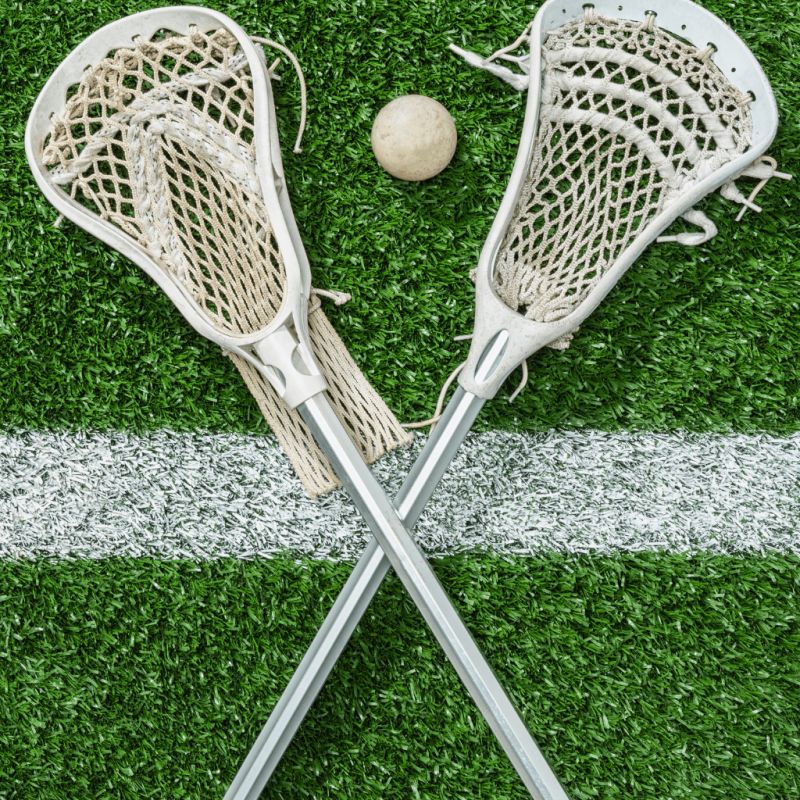
When it comes to lacrosse stick sizing by position, attackmen tend to utilize shorter poles for optimal ball control and quick passing. The tight confines around the crease demand excellent coordination and footwork with the stick, necessitating superb command over ball handling.
For youth players, attack sticks range on the shorter side of the length spectrum, generally just above the player’s height measurement. Adult attackmen utilize sticks from 30-42 inches for NCAA and professional play. This allows them to swiftly cradle, roll dodge defenders and fire off accurate shots on tight angles near the goal.
The top of the stick head reaching just above the collarbone or sternum allows attackmen to protect their stick during dodging, maintain strong grip leverage and prevent defenders from easily checking the ball free. Ultra-short sticks can hinder passing lanes and shooting range, so ensure your player’s stick reaches near shoulder level when held properly.
During games, elite attackmen like Lyle Thompson and Pat Spencer command their sticks like extensions of their hands. Their compact, controlled movements allow splitting double teams, dodging from X and oscillating around the crease for quick time and room shots. Mimicking their technique requires stick mastery only possible with a shorter pole.
For youth players graduating to attack roles, fight the instinct to immediately size up to the maximum length. Instead, incrementally increase over time as skills develop before extending to the length limit. Proper cradling, shooting mechanics and footwork should remain the priority over added reach. Once stick skills are cemented, length can be added to open more passing and shooting lanes as needed.
With a properly sized stick tailored to their position, attackmen gain the superior ball control and handling needed to excel around the net at higher levels of lacrosse. While length adds reach, nothing replaces flawless technique honed with a shorter stick before expanding range.
Defensemen Favor Longer Lacrosse Sticks
For most players, the stick length should match this measurement, allowing the head to extend slightly above their hips or sternum when standing upright. Attackmen and midfielders might prefer a stick that reaches a couple of inches higher, while defensemen often opt for longer sticks that reach just below the chin or to the collarbone.
Fine-Tuning Stick Length for Comfort and Performance
Once you’ve measured your child, it’s time to fine-tune the stick length for optimal performance. Have your young player hold the stick vertically next to their body. They should be able to grip the handle comfortably without straining to reach the top or bottom.
- Allow a few inches of extra length for growth, but avoid excessive length that might hinder control.
- Observe your child cradling, scooping, passing, and shooting with the stick.
- If they struggle to reach the head or generate sufficient power, consider sizing down.
- Remeasure at least twice per year to accommodate growth spurts.
Can stick length affect a player’s performance? Absolutely. A properly sized stick allows for better ball control, more accurate passing, and improved shooting power. It also reduces the risk of developing poor techniques that can be hard to correct later on.

The Impact of Skill Level on Lacrosse Stick Selection
While height is a crucial factor in determining stick size, a player’s skill level also plays a significant role. Beginners often benefit from shorter sticks that are easier to handle, while more advanced players can leverage longer sticks for increased reach and control.
Tailoring Stick Length to Player Experience
For new players just starting their lacrosse journey, it’s generally best to err on the side of shorter stick lengths, even if they meet the height requirements for a longer pole. This approach allows them to develop fundamental skills more easily and gain confidence in their abilities.
As players progress and improve their technique, gradually increasing stick length can enhance their performance. Advanced players often prefer longer sticks for improved ball handling, passing, scooping, and checking abilities.
- Beginners: Stick to the lower end of the recommended size range for their age group.
- Intermediate players: Move towards the upper end of the size spectrum.
- Advanced players: May opt for even longer poles if allowed by regulations.
How does stick length affect skill development? Shorter sticks allow new players to focus on proper technique without the added challenge of managing excess length. As skills improve, longer sticks provide advantages in reach and control that can elevate a player’s game.

Position-Specific Stick Sizing: Attackmen and Their Unique Requirements
Different positions in lacrosse have varying stick length requirements, with attackmen typically favoring shorter sticks. This preference is rooted in the demands of their role and the areas of the field where they operate.
The Advantages of Shorter Sticks for Attackmen
Attackmen often work in tight spaces near the crease, requiring excellent ball control and quick maneuvering. Shorter sticks provide several advantages in these situations:
- Enhanced ball control and stick handling in confined spaces
- Quicker release on shots and passes
- Improved ability to protect the stick during dodges
- Better leverage for maintaining possession under pressure
For youth attackmen, stick lengths typically range from just above their height measurement to a few inches higher. In NCAA and professional play, attack sticks are limited to 30-42 inches in length.
Why do attackmen prefer shorter sticks? The reduced length allows for more precise control in tight situations, faster stick movement for dodging defenders, and quicker shot release when opportunities arise near the goal.

Midfielders and Defensemen: Balancing Reach and Control
While attackmen benefit from shorter sticks, midfielders and defensemen often require longer poles to suit their roles on the field. The ideal stick length for these positions strikes a balance between reach and control.
Optimizing Stick Length for Midfielders
Midfielders play a versatile role, transitioning between offense and defense. Their stick length should allow for both offensive finesse and defensive reach:
- Youth midfielders: Stick length typically reaches the collarbone or slightly above
- Adult midfielders: Often use sticks between 40-42 inches long
- Some midfielders may opt for longer “long poles” for specialized defensive roles
Maximizing Reach for Defensemen
Defensemen require longer sticks to cover more ground and disrupt offensive players effectively:
- Youth defensemen: Stick length often reaches just below the chin
- Adult defensemen: Use poles up to 72 inches long in NCAA play
- Longer sticks provide advantages in checking, intercepting passes, and controlling ground balls
How does stick length affect a midfielder’s versatility? A well-sized stick allows midfielders to seamlessly transition between offensive and defensive play, providing the reach needed for defensive maneuvers without sacrificing control for offensive techniques.

Age-Specific Stick Size Recommendations: From Mini Sticks to High School
As young players grow and develop, their lacrosse stick sizes should evolve accordingly. Here’s a breakdown of recommended stick sizes for different age groups:
Mini Sticks (Ages 4-6)
- Length range: 30-34 inches
- Ideal for introducing the youngest players to basic stick handling
- Lightweight and easy to control for small hands
Junior Sticks (Ages 7-9)
- Length range: 36-42 inches
- Allows for development of fundamental skills
- Provides a transition to full-sized youth sticks
Youth Sticks (Ages 10-12)
- Length range: 40-50 inches
- Accommodates growing players and improving skills
- Prepares players for more advanced techniques
Middle School/Early High School (Ages 13-15)
- Length range: 40-60 inches (attack/midfield), up to 72 inches (defense)
- Allows for position specialization
- Supports development of advanced skills and strategies
High School (Ages 16+)
- Length range: 40-72 inches, depending on position and regulations
- Mimics adult stick sizes for seamless transition to higher levels of play
- Enables full utilization of advanced techniques and strategies
When should you consider moving your child to a longer stick? As players grow physically and improve their skills, gradually increasing stick length can enhance their performance. However, it’s crucial to ensure that the longer stick doesn’t compromise proper technique or control.

The Role of Stick Material in Size Selection and Performance
While length is a critical factor in lacrosse stick selection, the material of the stick also plays a significant role in its overall performance and suitability for young players.
Comparing Stick Materials: Wood, Aluminum, and Composite
Different stick materials offer varying benefits in terms of weight, durability, and feel:
- Wood: Traditional and affordable, but heavier and less durable
- Aluminum: Lightweight and durable, popular for beginners and intermediate players
- Composite: Offers the best balance of weight, strength, and feel, preferred by advanced players
How does stick material affect size selection? Lighter materials like aluminum and composite allow for slightly longer sticks without adding excessive weight, which can be particularly beneficial for younger or smaller players looking to maximize their reach.
Balancing Weight and Length for Optimal Performance
When selecting a lacrosse stick, it’s essential to consider both length and weight. A longer stick made from a heavier material may be too cumbersome for a young player to handle effectively. Conversely, an ultralight stick may not provide enough stability for proper technique development.

For youth players, aim for a balance that allows for comfortable handling and proper technique execution. As players grow stronger and more skilled, they can gradually transition to longer and potentially heavier sticks that offer increased performance benefits.
Adjusting Stick Size as Players Grow: A Continuous Process
Choosing the right lacrosse stick size is not a one-time decision. As young players grow and develop, their equipment needs will change. Regular assessment and adjustment of stick size are crucial for maintaining optimal performance and continued skill development.
Signs It’s Time to Resize Your Child’s Lacrosse Stick
Watch for these indicators that your young player may have outgrown their current stick:
- Difficulty maintaining proper form during cradling or shooting
- Increased fumbling or loss of control during play
- Complaints of discomfort or awkwardness when handling the stick
- Visible strain when attempting to reach the top of the stick
- Noticeable improvement in control when trying a longer stick
How often should you reassess your child’s stick size? It’s recommended to evaluate stick fit at least twice per year, ideally before the start of each season. However, during growth spurts, more frequent checks may be necessary to ensure continued proper fit.

Gradual Transitions: The Key to Smooth Skill Progression
When it’s time to move to a longer stick, consider a gradual transition to allow your child to adapt comfortably:
- Start with an increase of 1-2 inches in length
- Allow time for adjustment and practice with the new stick size
- Monitor performance and comfort level closely
- If adaptation is smooth, consider further increases as needed
This measured approach helps maintain confidence and skill level while adapting to the new equipment dimensions.
Beyond Size: Other Factors to Consider in Lacrosse Stick Selection
While size is a crucial aspect of choosing the right lacrosse stick, several other factors contribute to finding the perfect fit for your young player.
Head Design and Its Impact on Play
The design of the lacrosse stick head can significantly affect performance:
- Wider heads: Easier for beginners to catch and control the ball
- Narrower heads: Provide more accuracy and ball retention for advanced players
- Stiffness: Stiffer heads offer more accurate passes and shots, while flexible heads can be more forgiving for beginners
Pocket Depth and Style
The pocket of the lacrosse stick head plays a crucial role in ball control and release:
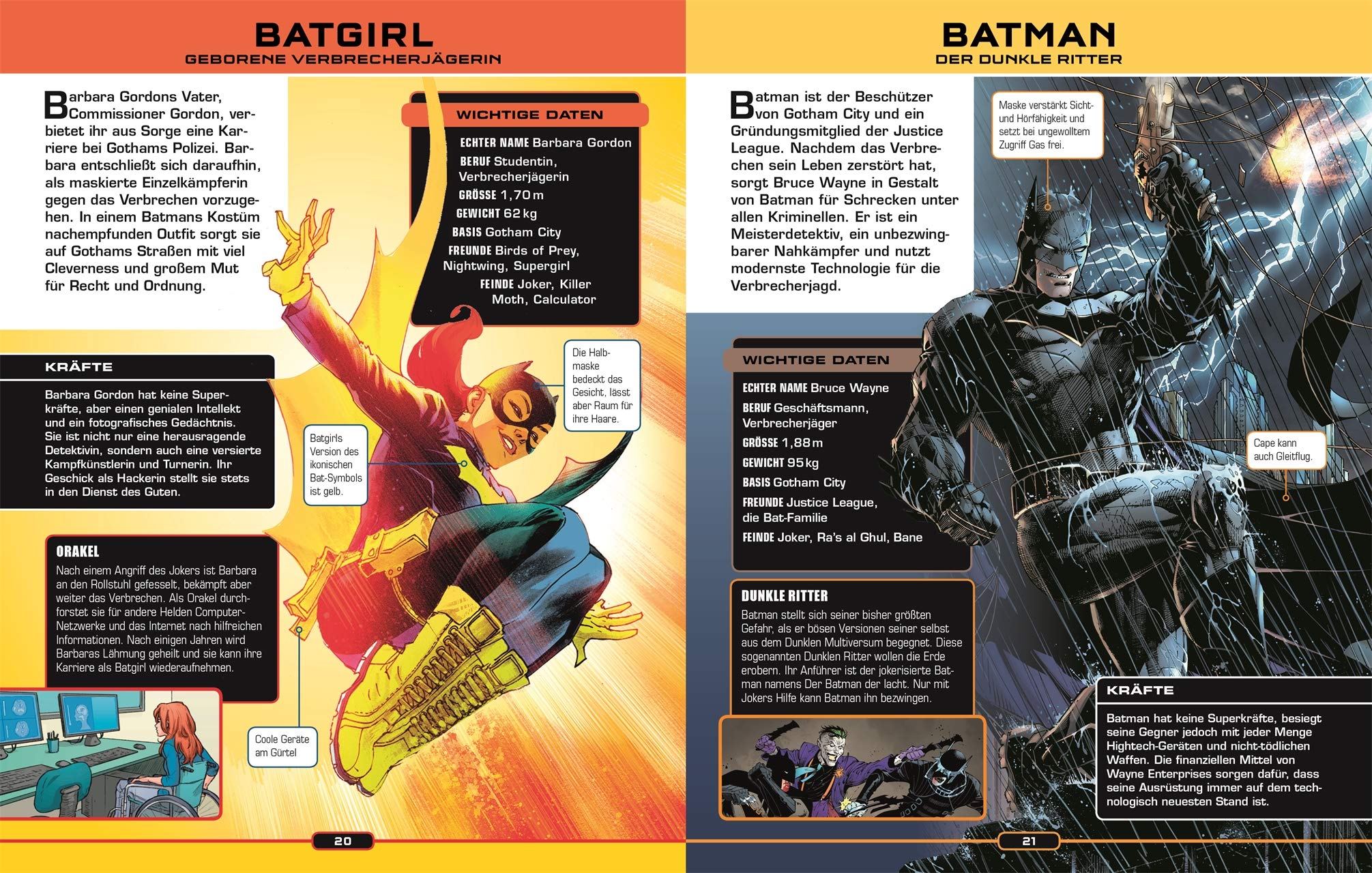
- Deeper pockets: Offer more ball control and are often preferred by attackmen
- Shallower pockets: Provide quicker release and are often favored by midfielders
- Mesh vs. traditional pockets: Each offers different feel and performance characteristics
How do head design and pocket style interact with stick length? The combination of these factors can significantly impact a player’s ability to control, pass, and shoot the ball effectively. A well-matched stick length complements the head design and pocket style to enhance overall performance.
Grip and Shaft Texture
The feel of the stick in a player’s hands can greatly affect their comfort and control:
- Smooth shafts: Often preferred by players who frequently adjust hand positioning
- Textured shafts: Provide additional grip, especially in wet conditions
- Ergonomic grips: Can enhance comfort and reduce fatigue during extended play
When selecting a lacrosse stick, encourage your child to handle different options to find the grip and texture that feels most comfortable and secure in their hands.
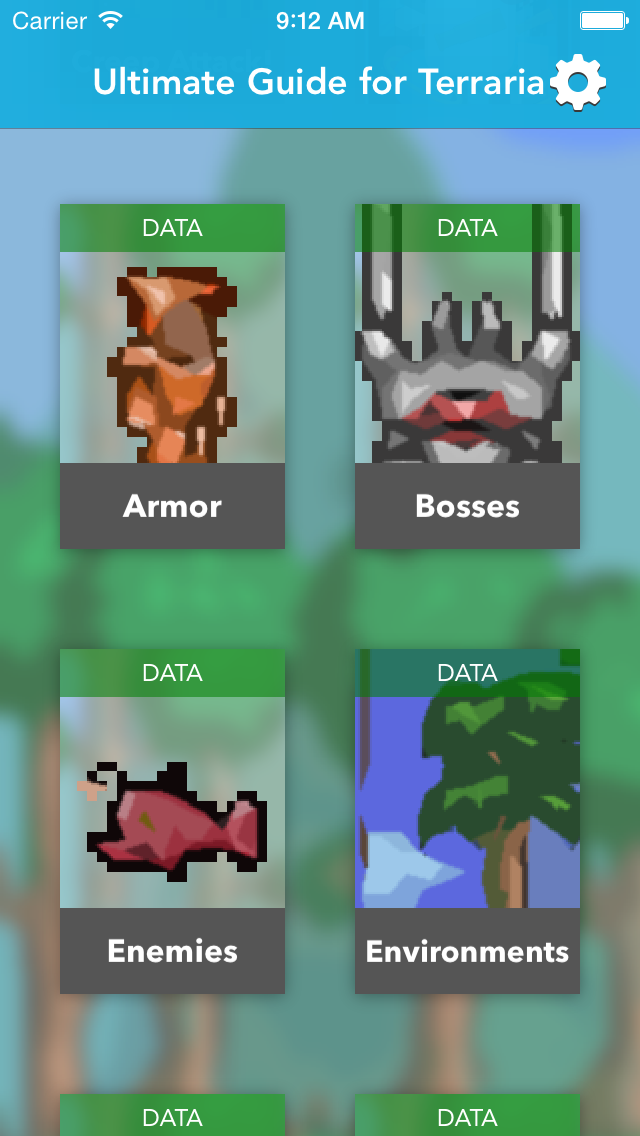
Consulting with Coaches and Experts: Refining Your Stick Selection
While this guide provides a comprehensive overview of lacrosse stick sizing, consulting with experienced coaches and equipment specialists can offer valuable insights tailored to your child’s individual needs and playing style.
The Benefits of Professional Guidance
Seeking advice from lacrosse experts can help in several ways:
- Personalized recommendations based on your child’s physical attributes and skill level
- Insights into position-specific equipment needs
- Guidance on adapting stick size as your child grows and improves
- Information on the latest equipment trends and technologies
Making the Most of Equipment Tryouts
Many lacrosse retailers and clubs offer equipment demo days or tryout sessions. These events provide excellent opportunities to:
- Test multiple stick sizes and styles in a practical setting
- Receive feedback from coaches and equipment specialists
- Compare different brands and models side-by-side
- Observe how stick size affects your child’s performance in various drills
How can you prepare for an equipment tryout session? Encourage your child to bring their current stick for comparison, wear appropriate lacrosse attire, and be ready to participate in a variety of drills to thoroughly test different stick options.

Investing in Growth: Balancing Cost and Quality in Youth Lacrosse Sticks
As a parent, you want to provide your child with the best equipment possible, but it’s also important to consider the frequency of size changes and the durability needed for young players.
Strategies for Cost-Effective Equipment Management
Consider these approaches to manage the cost of regularly updating your child’s lacrosse stick:
- Opt for adjustable sticks that can grow with your child
- Look for quality used equipment from reputable sources
- Participate in equipment swap events within your lacrosse community
- Invest in higher-quality sticks for older players who have stabilized in size
Measure Your Child’s Height for Proper Stick Length
Selecting the right lacrosse stick size for your young player starts with measuring their height. As a general guideline, the length of the stick should match the distance from the ground to the player’s hips or sternum when standing upright. For attackmen and middies, the head of the stick can extend a couple inches above this point, while defensemen typically opt for sticks that reach the collarbone or just below the chin.
When properly sized, your child should be able to comfortably grip the stick handle while holding it vertically next to their body. There should be no more than a few inches of extra length beyond their sternum and no need to reach uncomfortably high or low during play. Allowing a bit of room for growth is ideal, but too much extra length can hinder ball control and checking skills.
While height charts provide a baseline, it’s best to physically measure each player to dial in the optimal stick length. Start by having your kid stand straight with their shoes on and arms relaxed at their sides. Mark their height on a wall or use a tape measure to determine the distance from the floor to their sternum or collarbone. Compare this length to the manufacturer’s sizing guidelines and select a stick within an inch or two of that mark.
With the properly fitted stick in hand, observe your player cradling, scooping, passing and shooting. If they have to strain to reach the head or can’t generate sufficient power, consider sizing down. Be sure to remeasure at least twice per year as growing kids will need regular length adjustments. With the right size stick, players gain confidence handling the ball and make quicker progress mastering fundamentals.
Consider Skill Level When Selecting Stick Size

In addition to height, factoring in your child’s skill level and position is key when selecting the optimum lacrosse stick size. More advanced players typically utilize longer sticks for greater reach and ball control, while beginners find shorter sticks easier to handle as they develop technical skills.
For new players just learning the game, err on the side of shorter stick lengths even if they meet the height for a longer pole. The exception could be taller, athletic middle or high school players jumping into lacrosse for the first time. But in general, youth players new to the sport will gain confidence faster using sticks on the shorter, more manageable end of the size range for their age group.
As players improve and move up in age brackets, extending stick length helps advanced ball handling, passing, scooping and checking. Attackmen and middies may add a couple inches above their height measurement, while defensemen can go even longer for maximum reach. But be sure your player can still implement proper technique without overextending on cradling, shooting or poke checks.
Stick with the beginner size ranges of 40-60 inches for Mini Sticks, 50-60 inches for Junior sticks, and 52-72 inches for Youth through High School sticks. Intermediate players can extend toward the upper end of those spectrums, while advanced players may opt for even longer poles if NCAA rules allow it. Goalies also require longer sticks for covering more of the net.
For multi-sport athletes new to lacrosse, consider starting on the shorter end of the size range during their first season before extending length. This allows them to focus on developing skills with a more controlled stick before adding reach. No matter the skill level, proper technique trumps maximizing stick length in the early stages of the sport.
Consulting with coaches helps dial in the ideal stick size based on your child’s experience level, positioning and skills. While height provides a starting point, factoring in ability allows players to perform at their peak with a properly sized stick as they progress in the sport.
Attackmen Typically Use Shorter Sticks

When it comes to lacrosse stick sizing by position, attackmen tend to utilize shorter poles for optimal ball control and quick passing. The tight confines around the crease demand excellent coordination and footwork with the stick, necessitating superb command over ball handling.
For youth players, attack sticks range on the shorter side of the length spectrum, generally just above the player’s height measurement. Adult attackmen utilize sticks from 30-42 inches for NCAA and professional play. This allows them to swiftly cradle, roll dodge defenders and fire off accurate shots on tight angles near the goal.
The top of the stick head reaching just above the collarbone or sternum allows attackmen to protect their stick during dodging, maintain strong grip leverage and prevent defenders from easily checking the ball free. Ultra-short sticks can hinder passing lanes and shooting range, so ensure your player’s stick reaches near shoulder level when held properly.
During games, elite attackmen like Lyle Thompson and Pat Spencer command their sticks like extensions of their hands. Their compact, controlled movements allow splitting double teams, dodging from X and oscillating around the crease for quick time and room shots. Mimicking their technique requires stick mastery only possible with a shorter pole.
For youth players graduating to attack roles, fight the instinct to immediately size up to the maximum length. Instead, incrementally increase over time as skills develop before extending to the length limit. Proper cradling, shooting mechanics and footwork should remain the priority over added reach. Once stick skills are cemented, length can be added to open more passing and shooting lanes as needed.
With a properly sized stick tailored to their position, attackmen gain the superior ball control and handling needed to excel around the net at higher levels of lacrosse. While length adds reach, nothing replaces flawless technique honed with a shorter stick before expanding range.
Defensemen Favor Longer Lacrosse Sticks
When it comes to lacrosse sticks, defensemen do everything they can to maximize their reach and dominate between the restraining lines. Using high school and college field lacrosse rules as a guide, defenders choose the longest poles allowable for their age and skill level.
For youth players, defense sticks start at 52 inches and go up to 72 inches for maximum checking range. Due to the physicality needed to control longer poles, most youth defenders opt for sizes on the shorter side of that range until getting into high school. As they master body positioning and poking techniques, length is increased annually.
NCAA collegiate rules allow for sticks up to 60 inches for field defenders. But specialized long poles can extend up to 72 inches, allowing elite defensemen to cover more ground. Added length improves checking, intercepting passes and protecting the cage. But mastery of proper footwork and body positioning is mandatory before stepping up to a 70+ inch pole.
When properly sized, the head of a defense stick should reach the player’s chin or mouth area when grounded. This allows maximum length while still maintaining control during checks, picks and batted passes. Extra long poles require impeccable timing and two-handed play to avoid overextending on pokes or throwing checks off-balance.
Legendary defensemen like Brodie Merrill and Michael Evans used their towering frames and 72 inch sticks to dominate professional lacrosse and become icons at the position. Developing defenders study their technique and footwork to someday control extra length like the greats. But even professional players rely on body position first before stick length.
While tempting to grab the longest pole allowable, youth players must methodically master body mechanics and skill development year-by-year before extending length. With a properly sized stick and focus on fundamentals over reach, defensemen gain the tools needed to develop into dominant last line of defense.
Stick With Age Guidelines for Youth Stick Sizes
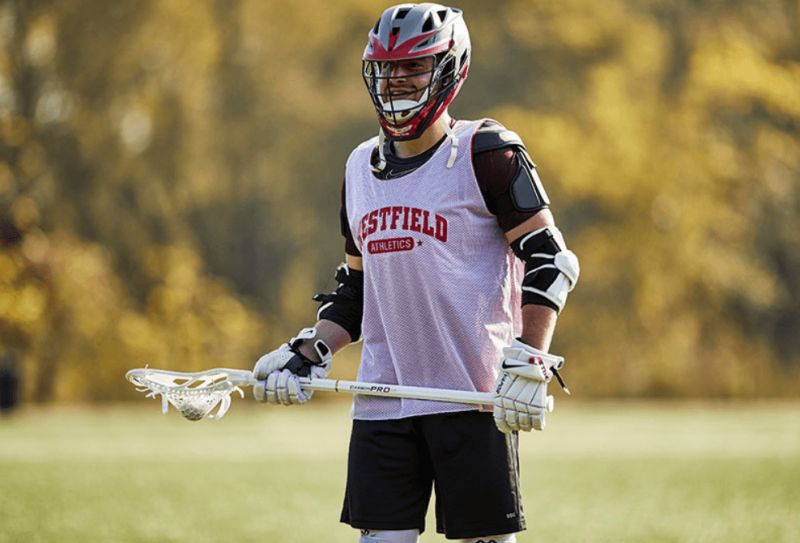
When sizing lacrosse sticks for youth players, a helpful starting point is consulting general length recommendations based on age group and level of play. Youth lacrosse organizations provide stick sizing guidelines tailored to the average size and ability of players at each stage.
For entry-level lacrosse, such as U6 and U8, stick lengths typically range from 40-50 inches. Mini lacrosse sticks help young kids 5-8 years old learn the basics of cradling, catching and scooping balls. As they graduate to Junior sticks from ages 7-11, length increases to 50-60 inches on average.
Once kids reach ages 10-12 and the Youth level, sticks expand to 50-72 inches. Players in this age group are developing skills quickly and can begin to utilize longer poles for intermediate passing and checking. Girls and new players may opt for 50-60 inches, while experienced players go up to 72 inches.
High school level play for ages 13-15 expands the range even further to 52-72 inches. With their athletic maturity, players can handle and control maximum legal lacrosse stick lengths. As with all levels, proper technique, fit and ability should dictate size over age guidelines.
While these general sizing charts provide starting points, measuring each youth player annually and factoring skill level is ideal. Kids grow rapidly and stick needs can change season to season. Brands like Brine, Warrior and STX now offer sticks in 2-inch graduations, allowing precise annual sizing adjustments.
Review league rules as well, as some youth leagues restrict maximum lengths beyond standard guidelines. Consulting coaches helps optimize size based on your child’s abilities and lacrosse stick control. With a properly sized stick dialed into their skill level, youth players build confidence and excel at each stage of development.
40-60 Inches Works for Most 10U Players
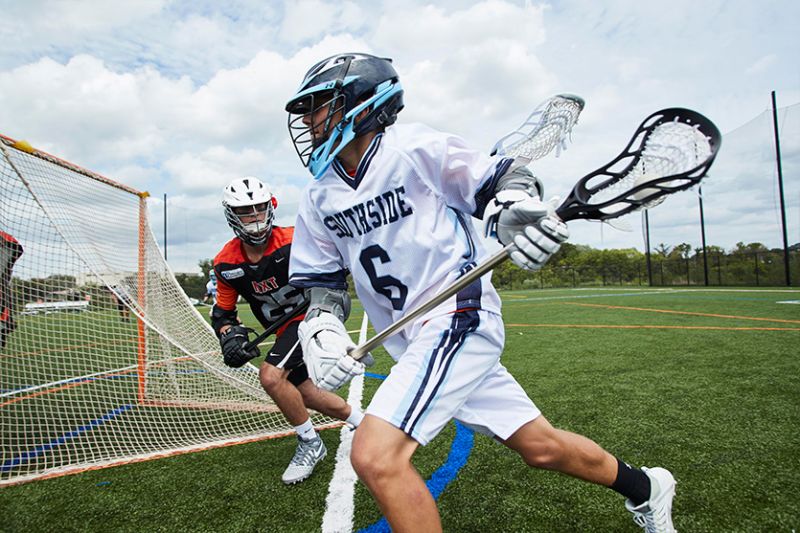
When it comes to selecting lacrosse sticks for 10U players, a size range of 40-60 inches allows most kids at this level to develop skills with confidence. While some leagues allow youth sticks up to 72 inches at this age, most 10-year-old players do best starting on the shorter end before gradually sizing up.
The 40-60 inch range for 10U sticks provides solid control for scooping ground balls, cradling, and accurate passing. Shorter poles help reinforce proper mechanics by keeping the stick head within close range during play. Kids can focus on footwork, body positioning and stick fundamentals without overextending on longer poles.
For particularly tall or athletic 10-year-olds, sizing toward the upper limit of 60 inches helps include needed reach. But be sure your player can handle the length with control first. Avoid sizing up sticks well beyond a player’s hip height at this stage, as too much length hinders skill development.
Work closely with your child’s lacrosse coach to determine the ideal length as the season progresses. Observe your player scooping, cradling and passing during drills, then make incremental size adjustments as warranted. There is no need to rush to maximum length until skills, strength and coordination fully develop.
With an appropriately sized 40-60 inch stick tailored to their current skill level, 10U players gain confidence and excel. As year-round training further hones athleticism and lacrosse IQ, length can be gradually increased over time. But for most 10-year-olds, shorter sticks prove optimal for building technical mastery.
50-72 Inches Ideal for 12U Players
When outfitting 12U lacrosse players, an ideal stick length range is 50-72 inches. Players in this age group are honing skills rapidly and can begin utilizing longer poles for intermediate stick work and checking abilities.
While some 12U players may still use Junior lacrosse sticks on the shorter end, most are ready to transition to a Youth stick maximized for their size and skill level. Measure each athlete individually, with 50-60 inches remaining a smart starting point for new players and girls crossing over from softball or soccer.
More experienced 12U players can work up to the 72 inch maximum as arm and body strength increase. Proper cradling, scooping and passing technique should remain the focus over added length early on. But with training, a 72 inch stick helps skilled players control the field and develop intermediate stick checking.
When outfitting 12U players, observe stick handing during practice to ensure proper fit. While length aids reach, ensure your athlete maintains solid footwork and positioning when handling and passing. If overextending occurs, size down incrementally until mechanics improve.
Consult coaches as well, as they can dial-in appropriate stick sizing based on skill and team positioning needs. With the right size 50-72 inch stick tailored to ability, 12U players expand skills heading into middle school lacrosse and beyond.
52-72 Inches Recommended for 14U Players
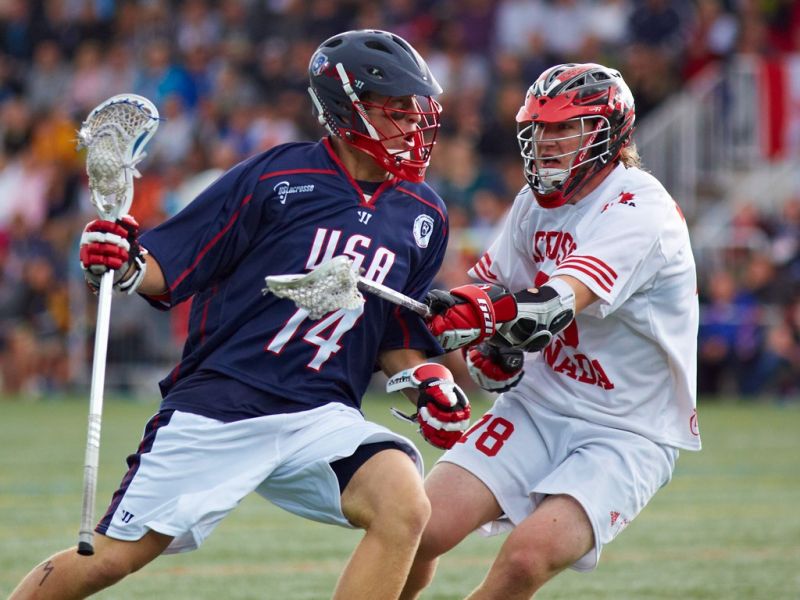
When sizing lacrosse sticks for 14U athletes, a range of 52-72 inches allows for optimal length based on skill and position. By age 14, most players have the size, strength and coordination to utilize sticks at the maximum legal youth lengths.
Measure each 14-year-old player individually to determine proper sizing. Height alone does not dictate stick length, as ability level and team position play key roles. Attackmen and developing players still mastering skills may opt for shorter sticks in the 52-60 inch range.
Meanwhile, elite middies and defensemen at the 14U level gain advantages utilizing the maximum 72 inch length. But be certain your athlete has the body control, balance and technique to wield longer sticks first. Proper fundamentals should not diminish when sizing up length.
Observe your 14U player in practice and games when determining ideal length. Ensure proper passing, scooping, cradling and shooting motion is maintained. Work with coaches as well to find the length that optimizes skills for each position.
With training and practice, the exceptional reach of 72 inch poles helps advanced 14U players own the field. But new and intermediate players still mastering basics should stick to shorter lengths until skills improve. Consider incremental sizing adjustments season to season to find the ideal range for your athlete.
Measure From Sternum for Proper Grip Length
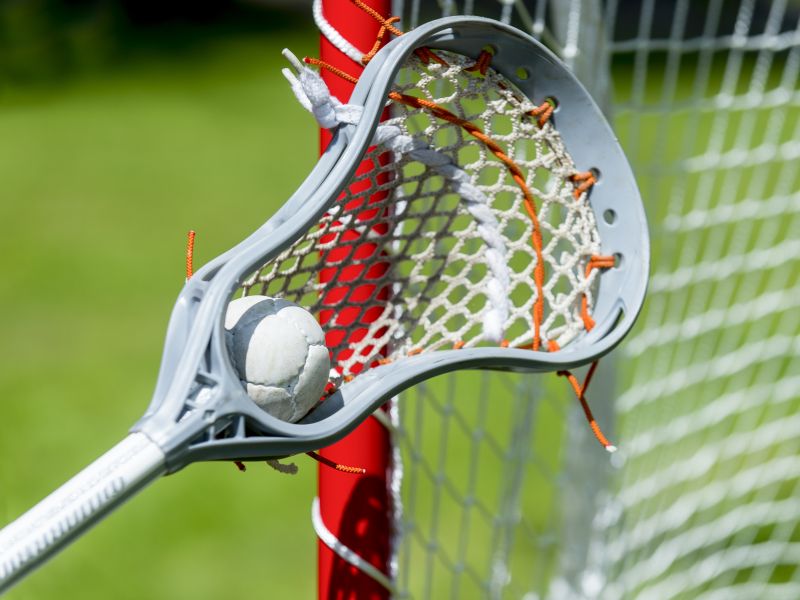
When fitting lacrosse sticks for youth players, measuring from the center of the sternum helps set the proper grip length along the shaft. With the stick grounded and arm extended, the head should reach the player’s sternum for ideal handling leverage.
Start by having your child stand tall with arms relaxed. Mark the middle of the sternum with a piece of tape or your finger. With shoes on, note this height measurement as a starting point for overall stick length when selecting size.
Once you have a stick in the recommended size range, adjust the butt end stop to create correct grip length. Have your player grip the shaft naturally with the head on the ground. Slide the stop until it lines up near their bottom hand. There should be no overextending down the shaft.
The stop should now be positioned at your child’s standing sternum height. With the stop set, observe proper grip length as they cradle and pass. Ensure their bottom hand maintains good leverage and control throughout motion. Make small stop adjustments until the fit feels natural.
As kids grow season to season, recheck sternum height and grip length. Younger players may need more choke up room, while older kids can extend grip length as skills improve. Setting grip length from the sternum center provides an ideal reference point.
With the shaft stop personalized for proper sternum grip length, players keep the stick head within close control for confident play. Take time to set grip specifications so kids can focus on developing skills, not adjusting fit during games.
Keep It Below the Collarbone When Held Upright
When properly sized, a youth player’s lacrosse stick should extend no higher than the collarbone when gripped and held upright next to the body. Any length requiring uncomfortable reaching overhead can hinder handling skills.
When measuring overall stick length, have your child stand straight with the stick grounded, as if cradling a ball. The head should reach no higher than their sternum or collarbone area for ideal leverage and control.
Attackmen and middies can extend a bit over this mark as skills progress, but overall length should remain manageable. Ground to collarbone height ensures players can cradle and pass without compromising proper mechanics by overreaching.
Next, have your young athlete grip the stick naturally and hold it vertical next to their frame with the butt end on the ground. The head should not extend over the collarbone. If it sits above this mark, consider sizing down length.
During games, players are constantly rotating stick orientation to scoop, cradle and pass. An oversized stick requires reaching overhead and throwing mechanics off balance. Keeping length manageable and below the collarbone keeps skills sharp.
As a final check, observe passing and shooting technique once a stick length is selected. Even if height-appropriate, any overextending or straining indicates a need to size down. With a little trial and error, you can find the maximum length kids can control for confident play.
Test Different Head Shapes to Find the Best Fit

When shopping for youth lacrosse sticks, testing different head shapes and styles helps dial in the optimal configuration for your player’s position and skill level. While length is a priority, finding the right head type boosts handling and control.
Narrower heads with minimal offset like the Brine Edge provide superior ball retention for young developing players. The tight channel helps keep the ball centered during cradling and scooping until skills progress. Intermediate players do well with mid-profile heads offering some offset for added ball control on passes and shots.
Wider heads with maximum offset like the Warrior Evo Pro are ideal for experienced high school and college midfielders who have mastered elite level passing and catching. But they are too much head for most youth players to control. Goalies also prefer wider heads to cover more net.
Have your young player test cradling and passing with different head styles at the lacrosse store. Narrower heads reinforce keeping the ball centered until passing mechanics improve. Allow kids to give feedback on which head shapes provide the most control and confidence.
While position-specific heads exist, fit and feel reign supreme early on. Focus on optimal length first, then experiment with head shapes until your athlete finds their best fit. With the right head shape dialed in, players gain trust in their stick handling abilities.
Focus on Correct Technique Over Maximizing Reach
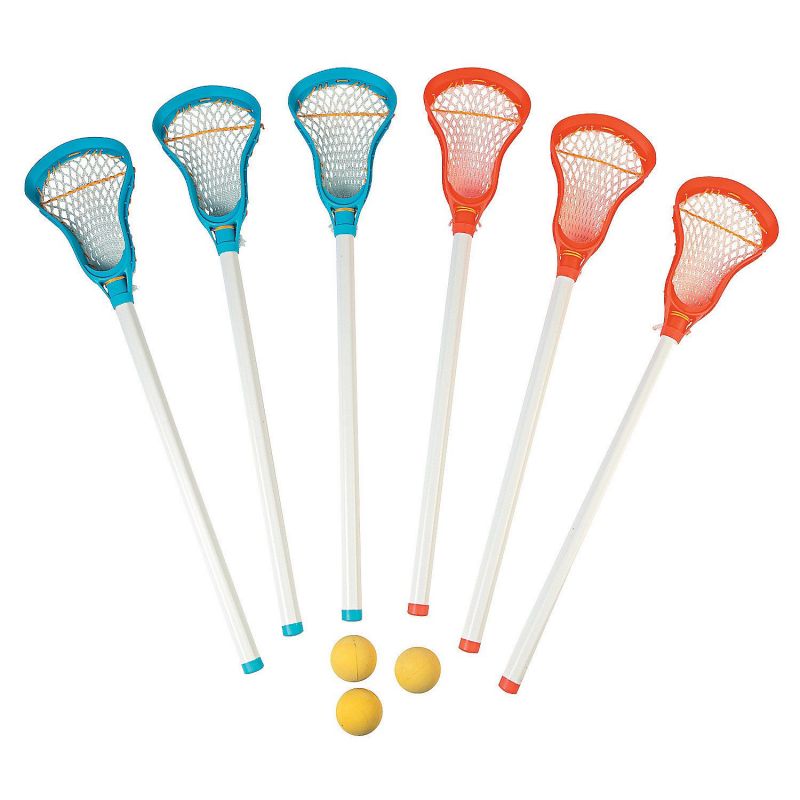
When sizing up youth lacrosse sticks, proper technique, mechanics and athletic positioning should remain the priority over maximizing length for reach. Especially for beginners, short sticks build fundamentals.
Instead of rushing kids to the longest poles, start players at shorter, more manageable lengths. Closer stick proximity reinforces keeping both hands on the shaft, proper cradling motion and quick feet to open space.
With shorter poles, shots and passes stay compact, with power from the lower body. Longer poles pull kids out of athletic stances and disrupt shooting form. Defensive positioning also suffers when stick length exceeds a player’s ability to control it.
Only increase length once coaches confirm players have mastered passing, scooping, cradling and shooting mechanics. A size increase one season too soon creates bad habits. Proper footwork, body and head positioning must remain sharp when handling longer sticks.
During games, focus on effort and skills rather than chastising dropped balls and errant passes. Perfect practice and reps makes skills second nature over time. Be patient and keep encouraging proper technique as kids adjust to new stick lengths each season.
While it’s tempting to maximize size for any advantage, increased length can actually hinder skill progression at younger ages. With fundamentals cemented first, added reach then helps elevate each child’s game when the time is right.
Ask Coaches for Size Recommendations
When determining optimal lacrosse stick size for youth players, don’t hesitate to ask coaches directly for input and recommendations. Their expertise and observations help ensure proper length based on skill, position and role.
Discuss your child’s height, experience level and abilities with their coach prior to stick shopping. Coaches see players handle sticks daily in practice and games. Their insights prove invaluable when selecting size.
Have your young athlete demonstrate cradling, scooping and passing for the coach and take notes on recommended length range. They may suggest certain players increase or decrease current stick size based on performance and potential.
During the season, consult with coaches again after observing your child play. Ask if the current stick length remains ideal or if an adjustment might help skills and confidence. They’ll provide honest feedback to dial-in improvements.
Make sure to loop back with coaches before making any sizing changes so they can confirm what length might optimize each kid’s ability. With guidance from trained lacrosse personnel, you can feel confident you’re making the best sizing decision.
While general guidelines exist, nothing replaces direct input from the coaches actively working with your young player. Their insights help customize lacrosse stick sizing for optimal potential and development.
